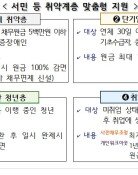Dried persimmon at gold winter night
Dried persimmon at gold winter night
Posted January. 20, 2014 06:24,
Persimmon trees are usually cultivated in the temperate climate of East Asia. Western people are unfamiliar with persimmons. In Korea, the trees have been widely cultivated since Goryeo Dynasty (918-1392). It is stated in Donggukisanggukjip, a collection of poems by Joseon scholar Yi Gyu-bo, A reward was offered for dried persimmons from Ha Nangjung. In Yongjaechonghwa, a collection of books on culture and custom of Goryeo and Joseon, it is written that King Taejong (of Joseon Dynasty) planted a persimmon tree in the palace and watched its fruits. One day when a crow flew to the tree and pecked at the fruit, the king ordered to find a good archer and had him shoot the crow. The archer who shot the crow was Yangnyeong, the crown prince. The king had disapproved of him and not met him for a long time, but after that day, he finally smiled at him.
Persimmon trees are generally used for furniture. The woods are popular because of its hardness and naturally flowing patterns in black. Old furniture such as stationary chests and closets made of persimmon woods has such amazing patterns that remind of ink-and-water paintings. The symmetric pattern that is earned by splitting a plank of wood is particularly artistic. Persimmon trees have black part inside because the species is a relative of the ebony tree.
Persimmon trees are from the temperate region, but grow well in warm climate. Because of this characteristic, our ancestors grafted the persimmon on the lotus-persimmon, which is resistant to cold. The lotus-persimmon bears fruits as small as a fingernail. The oldest lotus-persimmon grafted with the persimmon is in Sangju City in North Gyeongsang Province. This tree is estimated to have been planted during the reign of King Seongjong of Joseon Dynasty and be about 530 years old now.
Sangju, the city of the oldest grafted lotus-persimmon tree, is the largest producer of dried persimmons in Korea. Nearly 60 percent of the total dried persimmons are produced there. This year, the persimmon produce has decreased and accordingly its prices have increased because of the damages caused by harmful insects last fall. This raises concerns of persimmon farmers that high prices combined with westernized diet will affect the sales of dried persimmons. Farmers are committed that they would actively promote the local brand of Sangju Dried Persimmon and cut down some margin to maintain the sales volume. Only those who have tried slightly frozen persimmons at a winter night with beloved people would appreciate the pleasure of eating dried persimmons.
Moon Gwon-mo at Consumers and Business Desk (mikemoon@donga.com)






